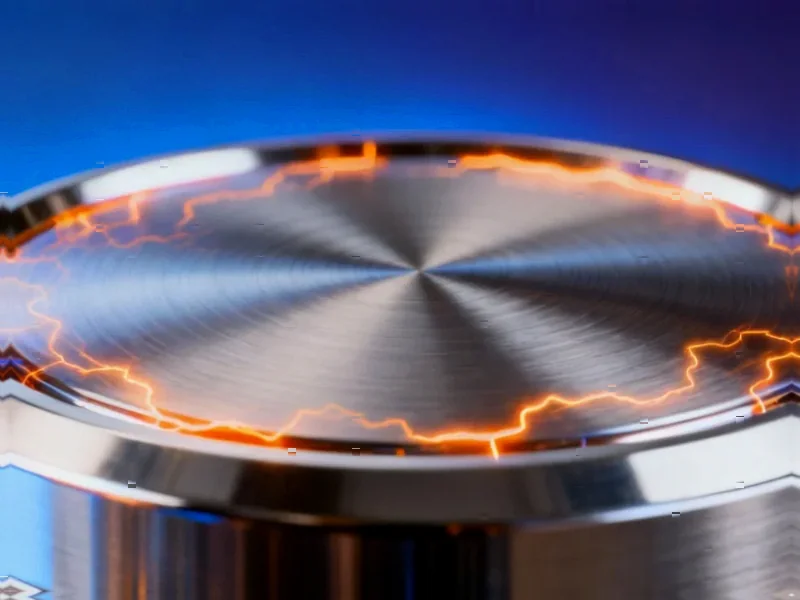According to Utility Dive, NextEra Energy expects to return the 615-MW Duane Arnold nuclear power plant in Iowa to service by early 2029, potentially as early as Q4 2028, following a 25-year power purchase agreement with Google signed on October 27. The company also revealed plans to explore building new advanced nuclear generation with Google and could optimize its existing 1,185-MW Point Beach and 1,250-MW Seabrook nuclear plants to accommodate approximately 6 GW of small modular reactors. NextEra added 3 GW of renewables and storage to its backlog in Q3, including 1.9 GW of battery storage, while reporting that returns in the power sector have reached unprecedented levels due to supply-demand imbalances. The Duane Arnold restart remains subject to regulatory approval as the company positions itself to serve hyperscale tech companies requiring dedicated generation capacity.
The Technical Hurdles of Nuclear Plant Resurrection
Restarting a nuclear facility that’s been offline since 2020 presents significant engineering challenges that go beyond typical maintenance. The Duane Arnold plant has been in a state of “safe storage” since its closure, which involves maintaining systems in a preserved condition but doesn’t account for the wear and tear of extended dormancy. Reactor pressure vessels, steam generators, and control systems require comprehensive requalification testing to meet current Nuclear Regulatory Commission standards. The plant’s original operating license would need substantial amendments, and the workforce development challenge is equally daunting—nuclear operators require years of specialized training, and many experienced personnel have likely moved to other industries or retired since 2020.
Why Tech Giants Are Turning to Nuclear
The AI compute revolution has fundamentally altered power consumption patterns for major technology companies. Traditional data centers operated with relatively stable power profiles, but AI training clusters can draw hundreds of megawatts in unpredictable bursts that strain grid stability. Nuclear power provides the 24/7 carbon-free baseload that intermittent renewables cannot guarantee, making it particularly valuable for companies like Google committed to 24/7 clean energy matching. The 25-year PPA structure provides price stability in an increasingly volatile energy market while giving NextEra the certainty needed to justify the substantial capital investment in plant reactivation.
The SMR Opportunity Beyond Traditional Nuclear
NextEra’s mention of accommodating 6 GW of small modular reactors across its nuclear sites represents a strategic pivot toward next-generation nuclear technology. SMRs offer several advantages for integration with existing nuclear infrastructure: they can leverage established transmission connections, utilize existing emergency planning zones, and benefit from communities already familiar with nuclear operations. The modular nature allows for incremental capacity additions that match growing demand rather than the traditional “big bang” approach of building multi-gigawatt plants. This approach also diversifies technology risk—if one SMR design encounters regulatory or technical challenges, others can potentially fill the gap.
How Battery Storage Complements Nuclear Revival
The 1.9 GW of battery storage contracts NextEra signed in Q3 aren’t just additional capacity—they’re strategic assets that enhance the value proposition of nuclear power in modern grids. Batteries can absorb excess nuclear generation during low-demand periods and discharge during peak hours, improving the economics of baseload nuclear plants that traditionally operated at constant output. This combination creates a “firm clean energy” product that’s particularly valuable for data center operators needing both reliability and sustainability. NextEra’s quarterly results show the company is building an integrated clean energy portfolio where nuclear provides the foundation, renewables reduce overall costs, and storage ensures reliability.
The Approval Pathway for Nuclear Restarts
Regulatory approval for restarting Duane Arnold will involve multiple agencies and complex technical reviews. Beyond the NRC, the plant must comply with updated environmental regulations, grid interconnection standards from regional transmission organizations, and state-level energy policies. The fact that this is a restart rather than new construction provides some regulatory advantages—the site’s environmental impact is already understood, and emergency response plans exist—but the NRC will require demonstration that all systems meet current safety standards, not just those from when the plant originally operated. The involvement of a credit-worthy counterparty like Google likely strengthens the regulatory case by demonstrating clear demand for the power.
Broader Implications for Energy Markets
NextEra’s nuclear strategy signals a fundamental shift in how utilities view existing nuclear assets in the context of growing electrification and AI demands. Rather than seeing aging nuclear plants as liabilities approaching retirement, companies are recognizing their value as foundation assets in a carbon-constrained, high-demand future. The ability to colocate SMRs at existing nuclear sites creates optionality for incremental capacity expansion without the siting challenges of greenfield development. This approach could become a template for other utilities with nuclear fleets, potentially reversing the trend of premature nuclear retirements that has characterized the past decade of energy transition discussions.




